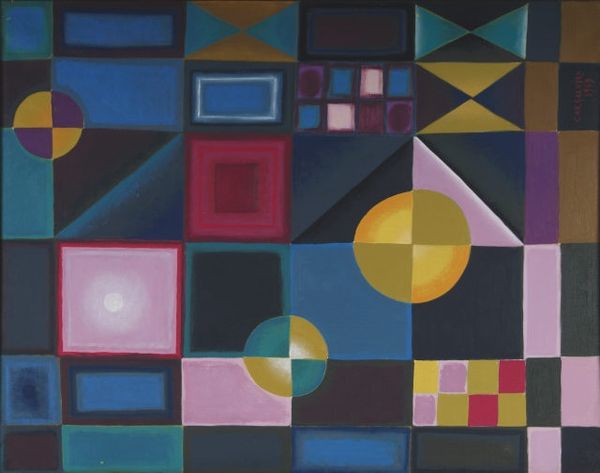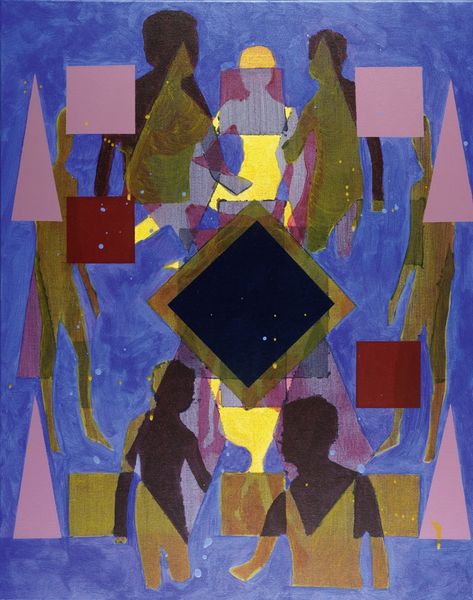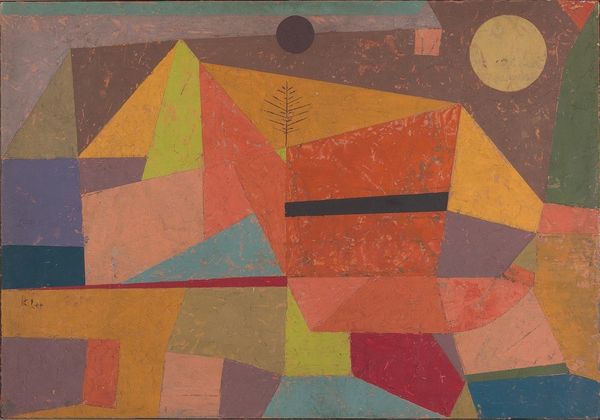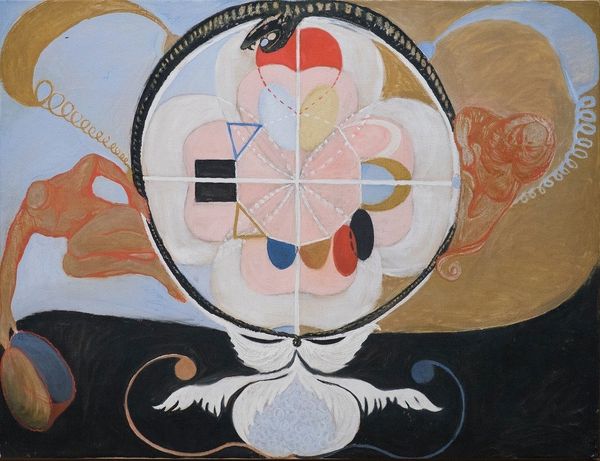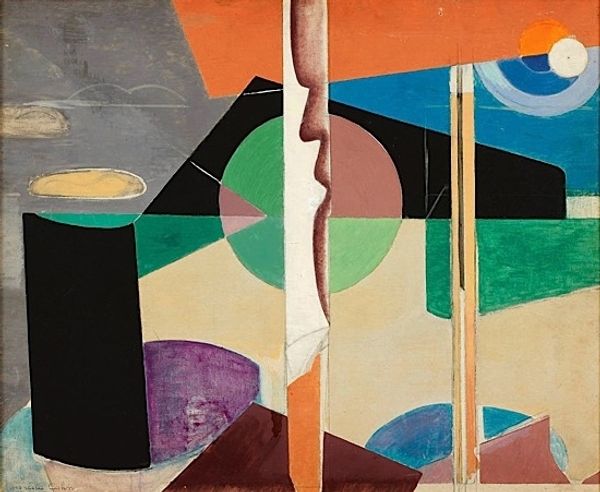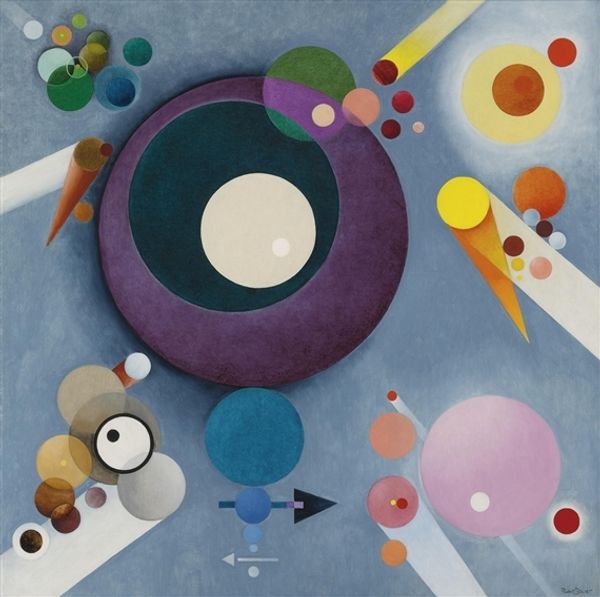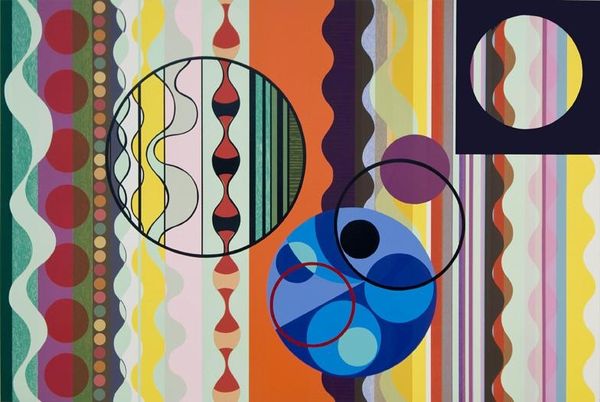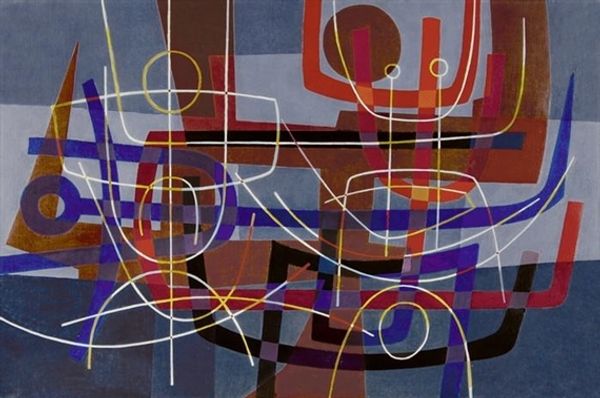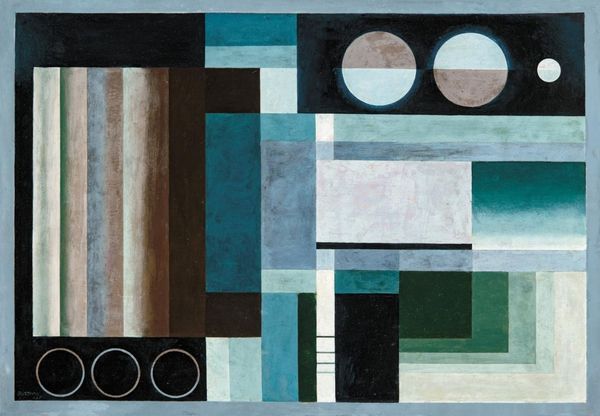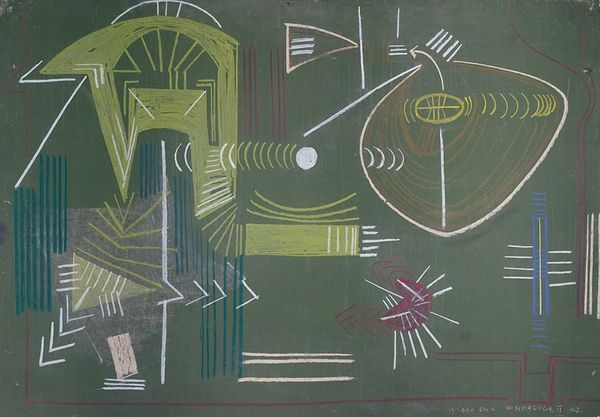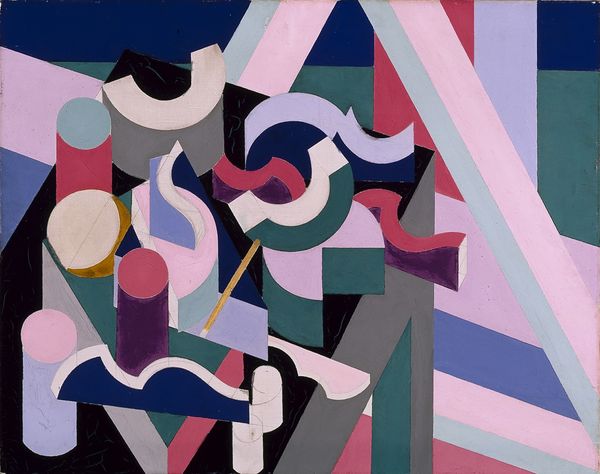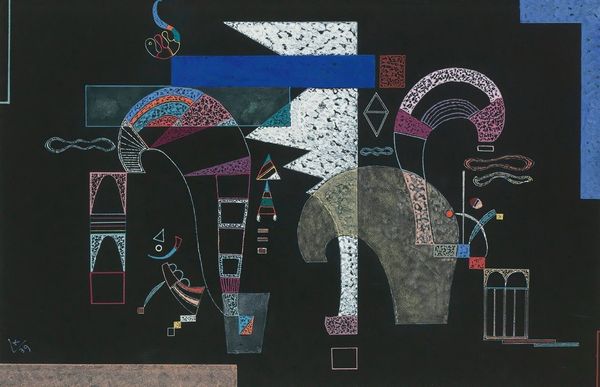
painting, acrylic-paint
#
painting
#
acrylic-paint
#
form
#
geometric
#
geometric-abstraction
#
abstraction
#
line
#
mural
#
bauhaus
#
modernism
Copyright: Rudolf Bauer,Fair Use
Editor: Here we have Rudolf Bauer's "Dark Square," painted in 1938. It’s an acrylic painting dominated by geometric forms, and for me, it has this almost utopian feel, yet with an underlying sense of unease due to the stark contrast and muted color palette. What do you see in this piece? Curator: I see a layered exploration of geometric abstraction deeply embedded within the socio-political context of its time. Consider the Bauhaus movement, where Bauer was situated, aiming to unify art, craft, and technology in service of a socially progressive agenda. This painting reflects that ethos, yet the "Dark Square" at the center hints at something more complex. Do you think the title offers any clues? Editor: Maybe it's about facing the shadows of progress, acknowledging that even utopian ideals can have a dark side? Curator: Precisely! Think about the rise of totalitarian regimes during that period. While Bauhaus championed rationality and functionality, it was ultimately shut down by the Nazi regime. Bauer, a Jewish artist, later faced persecution. The geometric forms could represent the desire for order, but the darkness within might signify the looming threat and eventual disruption of that order. The overlaying circles and shapes evoke feelings of imbalance and a questioning of society. What do you make of the specific color choices and their relationships? Editor: Now that you mention it, the washed-out blues and greens paired with the dark square… it creates a feeling of something being suppressed or overshadowed. Almost like a fading hope. Curator: Exactly. By understanding the historical context, the painting becomes a poignant commentary on the fragility of utopian visions in the face of oppressive forces, prompting us to critically examine the promises and perils of progress. Editor: Wow, I had only seen it as a pretty arrangement of shapes, but knowing the context really deepens the meaning. It is an invitation to reflection on the sociopolitical dimension. Curator: Indeed! Art can function as a mirror, reflecting the hopes and anxieties of a specific era, and offering valuable insight into the human condition.
Comments
No comments
Be the first to comment and join the conversation on the ultimate creative platform.
